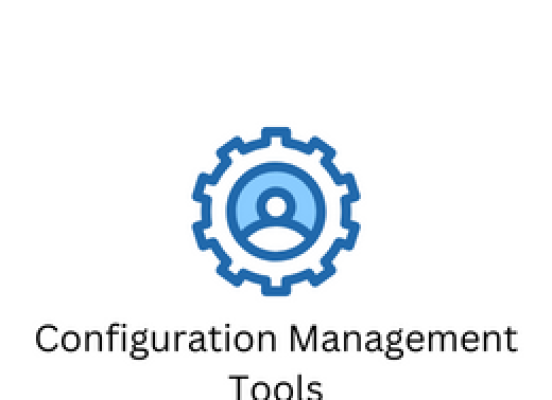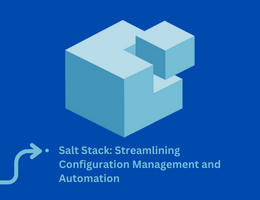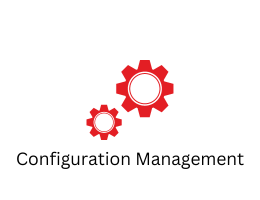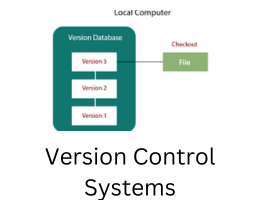
Configuration Management Tools
- By admin --
- Saturday, 16 Dec, 2023
Configuration management is a fundamental aspect of modern IT operations, playing a pivotal role in maintaining the stability, consistency, and efficiency of complex technology environments. It encompasses a set of practices, processes, and tools designed to manage and control changes to software, hardware, and infrastructure configurations. This discipline is crucial in addressing the challenges posed by the dynamic nature of today's IT landscape, where numerous components need to work seamlessly together to deliver reliable services.
The Essence of Configuration Management:
At its core, configuration management involves the systematic management of an organization's infrastructure, ensuring that it evolves in a controlled and predictable manner. The primary goal is to prevent configuration drift, a situation where the actual configuration of a system diverges from its intended state. This can lead to inconsistencies, security vulnerabilities, and operational issues.
Infrastructure as Code (IaC):
One of the key principles driving modern configuration management is Infrastructure as Code (IaC). IaC involves representing and managing infrastructure components—servers, networks, and storage—as code. This shift from manual, time-consuming configurations to code-based infrastructure provisioning brings several advantages. It enables version control, facilitates collaboration, and ensures that deployments are repeatable and consistent across various environments.
Leading IaC tools such as Terraform, Ansible, Chef, and Puppet have gained popularity for automating and managing infrastructure configurations. They allow organizations to define and deploy infrastructure through code, fostering agility and reducing the likelihood of configuration discrepancies between development, testing, and production environments.
Configuration Management Tools:
Several tools are integral to the configuration management process, each offering unique features and approaches. Ansible, for instance, emphasizes simplicity and agentless communication, making it accessible for a wide range of users. Chef and Puppet, on the other hand, provide more comprehensive solutions with a focus on scalability and complex infrastructure orchestration.
These tools facilitate the automation of routine tasks, ensuring that configurations are consistently applied across servers and devices. Version control systems like Git complement these tools, enabling teams to track changes, collaborate effectively, and roll back to previous configurations if needed.
Continuous Integration/Continuous Deployment (CI/CD):
Configuration management is tightly integrated with the principles of Continuous Integration (CI) and Continuous Deployment (CD). CI/CD pipelines automate the testing, building, and deployment of software, and configuration management plays a crucial role in ensuring that the underlying infrastructure is provisioned and configured correctly during these processes.
Automated testing of configurations within CI/CD pipelines helps catch errors early in the development lifecycle, reducing the likelihood of misconfigurations making their way into production environments. The synergy between configuration management and CI/CD promotes a culture of rapid, reliable, and iterative software development and deployment.
Security in Configuration Management:
As organizations increasingly rely on configuration management to deploy and manage infrastructure, security considerations become paramount. Best practices involve treating infrastructure as code and implementing security measures at every stage of the development and deployment lifecycle.
Securing sensitive information, such as credentials and encryption keys, is critical. Configuration management tools provide mechanisms for handling these securely, and practices like rotating credentials and encrypting sensitive data in configurations contribute to a robust security posture.
Configuration Management in Cloud Environments:
The advent of cloud computing has transformed the way organizations approach configuration management. Cloud environments offer unique challenges, such as the dynamic nature of resources and the need for elastic scaling. Configuration management practices must adapt to these challenges, leveraging cloud-native tools and services.
Infrastructure orchestration tools like Terraform excel in managing cloud resources, providing a declarative approach to defining and provisioning infrastructure. Configuration management in the cloud emphasizes scalability, cost-effectiveness, and the ability to rapidly adapt to changing requirements.
Scalability and Performance Optimization:
Efficient configuration management becomes increasingly challenging as infrastructures scale. Scalability and performance optimization are critical considerations in ensuring that configurations are managed effectively without sacrificing system performance.
Strategies for managing configurations at scale include leveraging distributed architectures, optimizing communication protocols, and implementing load balancing. Performance monitoring tools play a crucial role in identifying bottlenecks and areas for improvement, allowing organizations to fine-tune their configurations for optimal efficiency.
Configuration Auditing and Monitoring:
Continuous monitoring and auditing are essential components of a robust configuration management strategy. Monitoring tools track the performance and health of systems, while auditing tools assess configurations against predefined standards and policies.
Configuration drift detection is a key aspect of auditing, helping organizations identify and rectify discrepancies between intended and actual configurations. Automated alerts and notifications enable proactive responses to configuration changes, minimizing the risk of operational issues and security breaches.
Case Studies and Best Practices:
Real-world case studies provide valuable insights into successful configuration management implementations. Examining both achievements and challenges faced by organizations in different industries offers a practical understanding of the benefits and complexities associated with configuration management.
Best practices in configuration management encompass a wide range of considerations, from version control strategies and collaborative workflows to implementing a culture of automation and continuous improvement. Learning from the experiences of others can guide organizations in developing effective and sustainable configuration management practices.
Conclusion:
In the dynamic landscape of IT operations, configuration management emerges as a cornerstone for achieving reliability, efficiency, and security. From Infrastructure as Code to continuous integration and security measures, the multifaceted nature of configuration management requires a holistic approach. By embracing automation, collaboration, and best practices, organizations can navigate the complexities of modern IT environments, ensuring that configurations align with business objectives and contribute to the overall success of their technology initiatives.





